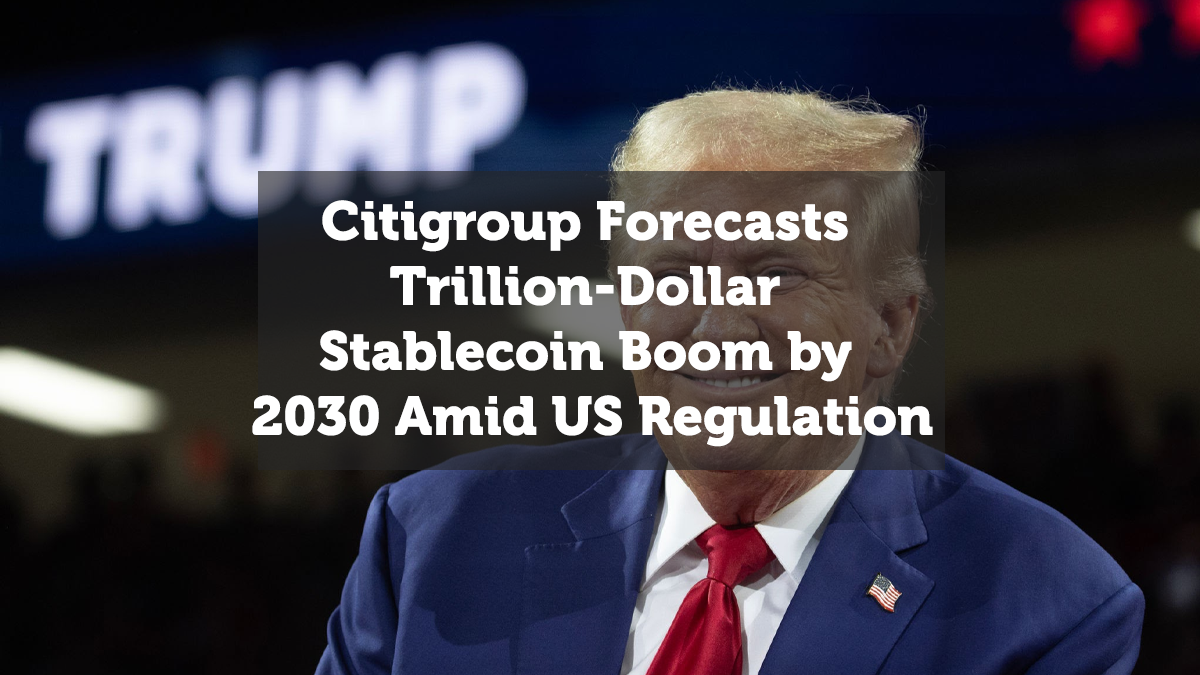
Citigroup Forecasts Trillion-Dollar Stablecoin Boom by 2030 Amid US Regulation
The stablecoin market is on the brink of a historic boom, according to a new forecast from Citigroup. The American banking giant believes the stablecoin supply could grow by up to 7 times over the next five years, thanks to pro-crypto regulatory efforts and the growing integration of digital assets into mainstream finance.
But while the outlook is mostly bullish, Citigroup also outlined several hurdles that could slow or even derail this trajectory.
Let’s dive into what they’re predicting—and the risks investors need to watch.
US Crypto Regulation Seen as Catalyst for Stablecoins
In its latest market perspective report, Citigroup ties its bullish forecast directly to the Trump administration’s new crypto policy initiative.
Back in January 2025, President Trump ordered the creation of a federal crypto working group tasked with building a regulatory framework that would support innovation while safeguarding financial stability.
Citigroup believes this move will:
- Provide clarity for stablecoin issuers
- Attract more institutional adoption
- Drive a surge in stablecoin demand globally
In fact, Citigroup points out that stablecoins already grew 30x over the last decade, and sees a strong probability of even greater growth by 2030 under this new environment.
The Numbers: Base, Bullish, and Bearish Scenarios
Citigroup outlines three scenarios for stablecoin market growth by 2030:
- Base case: $1.6 trillion increase in stablecoin supply
- Bullish case: $3.7 trillion surge
- Bearish case: $0.5 trillion growth
In their base case, Citigroup expects that this boom would lead to $1 trillion worth of new US Treasury purchases by stablecoin issuers—since regulations would likely require these coins to be backed by low-risk, dollar-denominated assets like Treasuries.
This could have huge implications for both the crypto ecosystem and the traditional financial system, creating stronger links between blockchain assets and the broader economy.
Challenges on the Horizon: Global Competition and De-Pegging Risks
Despite the optimism, Citigroup is not blind to the risks.
Here are the key challenges they highlight:
1. Global Currency Competition
While US dollar-pegged stablecoins dominate now, other nations may see them as a threat to their own financial sovereignty.
Citigroup expects:
- Europe and China to develop their own CBDCs and native-currency stablecoins
- A future where 90% of stablecoin supply remains dollar-denominated, but with growing competition from the euro and yuan.
2. Run Risk from De-Pegging Events
Stablecoins depend on maintaining a 1:1 peg to their underlying fiat asset.
Citigroup warns that a major de-pegging event—where a stablecoin loses its value relative to the dollar—could:
- Drain crypto liquidity
- Trigger platform failures
- Hurt the broader financial market, not just digital assets
This risk remains a key reason why future regulations will likely emphasize strong collateral requirements and transparency.
Current Stablecoin Landscape: Tether Dominates
At the time of writing:
- Stablecoin market cap: $237.25 billion
- Tether (USDT) market share: 62.65%
Despite concerns over centralization and transparency in stablecoins like Tether, demand remains strong—especially as crypto investors seek safer havens during market volatility.
Final Thoughts: Stablecoins as the Next Financial Rail?
If Citigroup’s forecast holds true, stablecoins could become one of the most important financial technologies of the next decade.
Between the push for regulation, the growing use in global commerce, and integration with traditional finance, the groundwork is being laid for a trillion-dollar stablecoin economy.
But success will depend heavily on avoiding major de-pegging events, balancing innovation with risk management, and navigating rising global competition from other central banks.























